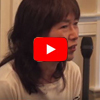Making Peace Make Sense
Daily Reflection / Produced by The High Calling
The Lord sets the prisoners free.
Psalms 146:7
On the West Bank, a baby is dead. So is his father. Both are victims of domestic terrorism—an arson attack against their Palestinian family’s home by suspected Jewish extremists.
Their so-called “price tag” arson is yet another horror unleashed in a conflict marked by cross-accusations of injustice, discrimination, and downright hatred.
At issue, however, is peace. Or the failure of it. It’s the same tragic dynamic that imprisons people in every corner of the globe—a posture of impasse and standoff that keeps adversaries locked behind the intractability of unforgiving relational bars. Where? In every hamlet and town—American cities, on Middle Eastern borders, across Russian steppes, in Chinese plateaus—including our own broken and unrepentant homes.
Many offer options. In an editorial last spring in the New York Times, Jewish peace activist Henry Seigman pleaded for Israelis and Palestinians to “Give Up on Netanyahu, Go to the United Nations.” His strategy? To use a “work around” through the U. N.’s Security Council to achieve peace in the region’s wrenching, deadly stalemate.
Hamas, meanwhile, keeps demanding the end of the punishing blockade and occupation of Gaza, where conditions for Palestinians continue to deteriorate.
I am well acquainted with stalemates, blockades, and strife. In my own family strife, I dared to seek God’s Word.
That’s where I headed after my youngest daughter converted to Islam—and stayed there—forcing the two of us to wrestle through tensions, a struggle to resolve the painful faith divide in our mother-daughter relationship.
And struggle we did. For ten hard years.
So first, we tried talking. Which led to arguing.
Then we tried negotiating, returning again and again to our different views of faith—both of us trying to convince the other we were right. Result? Standoff.
We also tried looking for “common ground”—buying into the argument that people have more in common than they have as difference. But “common ground” only emphasized our places of conflict.
Finally, after those long ten years, both of us began to understand that peace isn’t a signed agreement. Nor is it a place where one arrives—a “place of peace.”
Instead, first, peace is a choice. I choose peace. To walk, live, and offer peace. To understand, as Nelson Mandela did in South Africa, that “What has happened has happened.” That was then. And now is now.
And now? I choose peace. Despite everything.
Desperate for that choice to manifest in my everyday life, I finally allowed God’s Word to penetrate my heart to know Jesus is my peace. And his invitation is simple. Follow me.
So peace is a journey, starting as Charles Spurgeon wrote, with making “peace with God.”
To get there, I walk with my Christ. And along the way, he “sets the prisoners free.” The Bible story of the ten lepers proclaims the process, that “as they were going, they were healed.” (Italics mine.) The peace path is a divine walk, indeed.
Sometimes, adversaries stumble. My daughter and I have tripped over our own words. But each day, with fresh hope, the journey starts again. In peace. With love. By faith.
QUESTIONS FOR FURTHER REFLECTION: Are you in conflict with someone? Can you ask each other why? Will you listen to the answers? How can you let Jesus be your peace?
PRAYER: This conflict is killing me, Lord. It feels like that for sure. Lift me above this miry clay by drawing me closer to you—my Peace. Amen.






